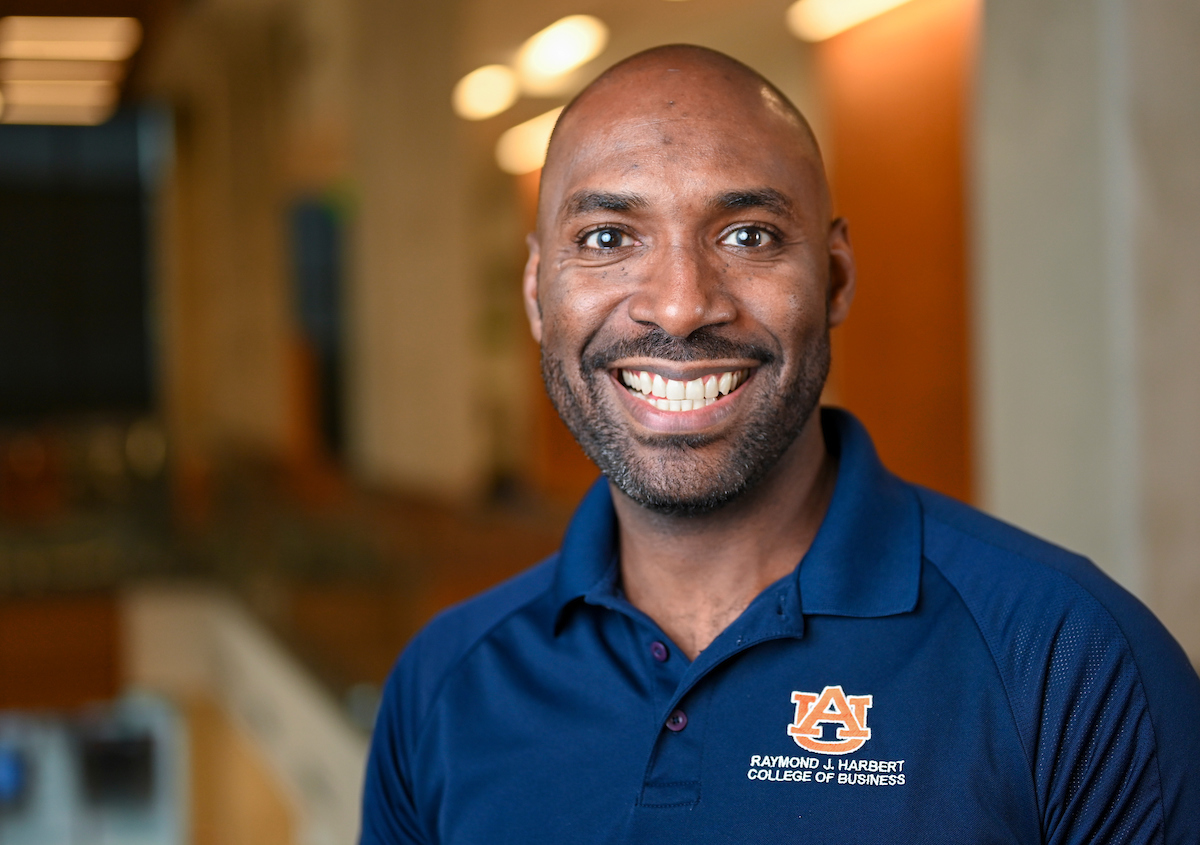The Federal Reserve has worked to navigate a soft landing for the economy since March
2022 when it began raising interest rates to tame inflation and avoid a recession.
Its decision to hike interest rates stemmed from the aggregate of a pandemic, record
economic stimulus, severe supply chain constraints and resulting inflation.
 |
Finance Professor of Practice Damion McIntosh
|
Investors were alarmed when the U.S. stock markets lost 2.5-3.5% of their value Aug.
5, largely due to a contagion from other global markets, including interest rate adjustments
made by the Bank of Japan. The markets soon recovered, and the nation’s overall economic
strength improved enough that the Fed cut interest rates in September for the first
time in more than four years.
Given the Fed’s actions and the hope for a soft landing, Damion McIntosh, a recognized expert in financial industry regulation and a professor of practice
in finance at Auburn University’s Harbert College of Business, recently took time to explain the latest trends in the overall economy and stock
market, and what investors might expect in 2025.
| Question: |
Do you predict there will be more rate cuts in the months/year ahead, and what factors
will influence the decisions on that? |
| Damion McIntosh: |
I had predicted only one rate cut in 2024 when asked this question several times earlier
in the year. In fact, my prediction was around 25 basis points (bps) and not 50bps
as occurred. Federal Reserve Chairman Jerome Powell has projected likely two more
rate cuts by year end if the economic data remains consistent.
Each will likely occur in the next meetings (November and December) if this consistency
is achieved. So far, we have seen inflation and unemployment fall from 2.9% and 4.3%,
respectively, in July, to 2.4% and 4.1%, respectively, in September. The former is
pushing toward the Federal Reserve’s 2% inflation target, and the latter is already
within the Federal Reserve’s revised year end unemployment forecast range of 3.8 –
4.4%.
Therefore, all lights are green for another rate reduction before year-end. Two seems
too many. However, I do believe whether there will be two reductions by year-end will
be a function of the size of the reduction in November’s Fed meeting. Powell has already
indicated that these cuts will be smaller so not 50bps as the last one.
|
| Question: |
What does the market’s current status signal for the overall health of the nation’s
economy and what should individual investors know about the market going forward into
2025?
|
| McIntosh: |
While we may not be where we would like to be, I believe we are where we should be
considering what we could have experienced during the pandemic but for the tools we
proactively implemented or implemented early. Those tools permitted us to better manage
the effects of the pandemic based on the lessons we learned from our protracted implementation
during the 2006-2009 financial crisis.
Our economy is strong and resilient. We need to demystify the perception that our
economy should always be spurring with little or no setbacks. The strength of our
economy is best reflected in our resilient capacity or ability to rebound quickly
when those setbacks occur. For this reason, I am extremely careful in using the r-(cession)
word even when its denotative meaning is met, because of the market’s reaction to
its negative connotation. This reaction creates further market anxiety which materializes
in a self-fulfilling prophecy of prolonged negative economic activity.
|
| Question: |
Are there any trends, good or bad, that stand out to you as we approach the end of
the calendar year and look ahead to 2025?
|
| McIntosh: |
Yes. I am an academic and a practitioner, so I believe in the story that data tells.
Right now, the data is positive toward reducing and eventually stabilizing inflation
and unemployment.
Interestingly, I may not see it in my grocery bill, but I am reminded that it may
be because of the specific items that I buy and that my grocery bill is just one component
of several used to calculate inflation. Therefore, I follow the data.
|
| Question: |
Will current seasonal hiring suggest anything significant investors should consider?
|
| McIntosh: |
There are a couple of ways I can respond to this. First, the demand for seasonal hiring
is reflective of increases in demand for goods/services for which seasonal hiring
is intended to respond by providing the needed increase in supply/production of those
goods/services, or the seasonal availability of labor supply. The result is increased
production irrespective of the reason.
Although the increased production is expected to be temporary, it is increased production/output
nonetheless that is expected to produce increased profitability and returns for investors.
Second, unemployment is reported after seasonal adjustments. Therefore, a lower unemployment
rate at the end of 2024 is a positive signal toward full unemployment and economic
strength, which increases investor sentiment.
|
| Question: |
If you had $1,000 to invest in the market today, where or in what type of stocks would
you invest it?
|
| McIntosh: |
Investing in the market today should reflect your financial goals, investment horizon,
and risk appetite/strategy. The specific response that this question requires may
be subtly interpreted as investment advice which I am not licensed to provide.
Instead, I will share that I have a long-term investment horizon based on my financial
goals that is supported by wealth accumulation. Therefore, my investment strategy
in the market does not differ because of the amount I have to invest. My strategy
is more aligned with passive investing which is intended to acquire stocks to hold
for the long term so I can build wealth largely through capital appreciation than
dividend income over time.
|
Question:
|
Any other thoughts or suggestions that you would like to share with readers interested
in the stock market?
|
McIntosh:
|
Yes! Investing in the stock market is not for the faint-hearted. Market movements
will play on your emotions and cause you to make rash and uncalculated decisions that
are often triggered by market anxiety coerced by a herding mentality. Therefore, it
is important to know and understand what your financial goals are, investment horizon,
and risk appetite.
Speak to a licensed investment advisor who will help to guide you. But remember, the
moment market anxiety triggers you to make an immediate decision, then that is the
moment to stop, regroup, remove the emotions, examine the facts and fundamentals,
and ensure your investment decision is calculated.
|
###
The Expert Answers Q+A reflect the expertise and opinions of individual faculty members
and do not necessarily represent an official policy or position of the university.
About Damion McIntosh
Damion McIntosh is an accounting, banking and finance academic and practitioner who serves as a faculty
member and award-winning instructor at Auburn University’s Harbert College of Business.
In addition to his role at Auburn, McIntosh provides consulting services on financial
institution regulatory and supervisory issues. Earlier in his career, he worked for
the Bank of Jamaica, the country’s central bank, as an examiner, policy analyst and
assistant director.
The Harbert College of Business is a nationally ranked hub of undergraduate, graduate and continuing business education
that is inspiring the next generation of business leaders. Our world-class faculty
deliver unparalleled academic rigor in the classroom, while our research-driven scholarship
advances thought leadership and best practice across business disciplines. The largest
college on Auburn's campus, Harbert enrolls more than 7,100 undergraduate, graduate
and doctoral students.

 Degrees & Programs
Degrees & Programs
 Faculty & Staff
Faculty & Staff
 Career Development
Career Development
 Recruiters & Industry
Recruiters & Industry



